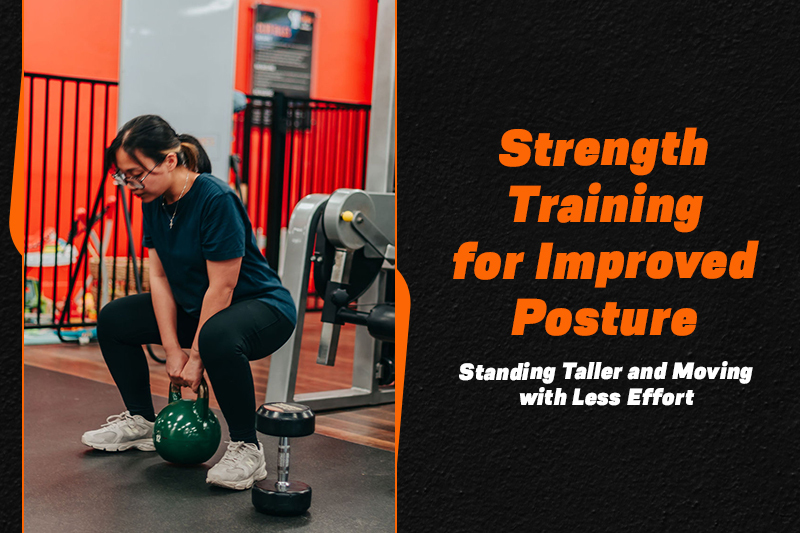ALWAYS OPEN 24/7

In our era of office work, commutes, and continous screen time, bad posture has become a modern trend. Forward head tilt, sloping shoulders, and hunched back aren't only ugly — they affect breathing, joint stability, and self-confidence. The good news is, you can fix and prevent the problems with one of the most handy tools around — strength training.
Posture isn't just the position you assume when you're standing or sitting — it's the outcome of how your body's nervous system, joints, and muscles function together. If your alignment is off because some of your muscles are overactive and some of your muscles are weak from poor movement patterns, strength training corrects that by:
Scientific research repeatedly demonstrates that resistance training also fortifies spinal alignment, muscle balance, and movement control — all the elements of optimal posture and painless movement.
When posture breaks down, so does efficiency. Rolled-forward shoulders restrict full-breathing capacity, slouchy glutes cause lower back strain, and tightened hip flexors decrease range of motion. Ultimately, these imbalances will result in chronic rigidity, exhaustion, and even gym injuries.
Stretching and band-aids can help some temporarily, but without proper strength training to properly strengthen the right muscles, outcomes never endure. Strength training addresses the source — not the symptom.
To improve your posture, you want to build strength where it matters the most:
By regularly working these muscle groups, you will not only have increased your posture, but also coordination, balance, and athletic performance.
You don't require some elaborate routine to practice improving your posture; the top technique is being consistent in practice and being aware of postural positioning. Adding a few adjustments to your strength-training program will allow you to begin enjoying more benefit:
These strategies assist with alignment and another chronic problem in training, injury.
Strength training is essential, but you are the one who can put it all together. Here are some tips to continue the momentum when you are not strength training:
Making small changes to your lifestyle can have a huge impact over time.
Although posture correction is easy, most individuals inadvertently reinforce poor habits. Some typical errors include:
The solution is balance — combine mobility, stability, and strength into your training for long-term improvement.
Good posture isn't just standing tall - it's moving well. When your posture is in place, your muscles work more efficiently, you breathe more efficiently, and you have more energy. From weight training, to running, to even your daily trip to the grocery store, good posture improves the performance of everything you do.
Good posture also promotes confidence. Tall posture gives off an air of strength and confidence in the gym and outside the gym.
Posture issues are common, however, they are temporary. By implementing a consistent, balanced strength training program that engages the correct muscles, anyone can retrain their bodies to stand and move better. Good posture equates to better performance, less injury, and overall better health — benefits far beyond the exercise studio.
Kahma Fitness Shepparton will change the way you think about health and fitness forever - we have the best trainers that are extensively qualified, easy membership options, and take pride in helping you train better, feel stronger, and move better every day.